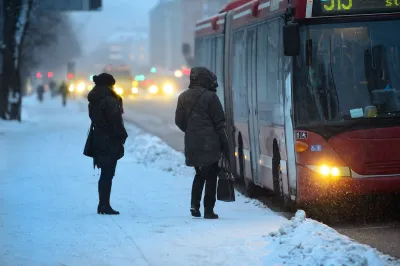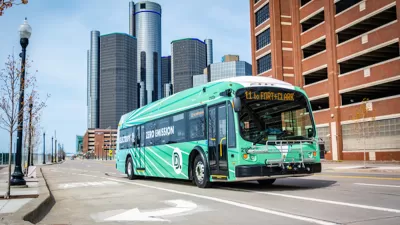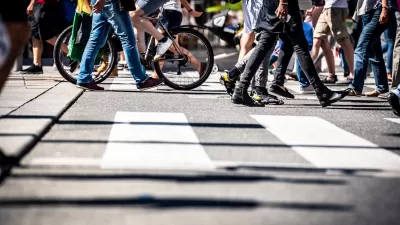Unsurprisingly, people are less likely to use transit during extreme weather events, which are becoming more common around the country.

Extreme weather contributes to a drop in transit ridership, a new study reveals, showing that “America needs to better climate-proof its transit networks and encourage more people to choose shared modes now.”
As Kea Wilson explains in Streetsblog USA, “A recent study of 43 major U.S. transit networks revealed that ridership dropped during long stretches of rain, heat, or other prolonged extreme weather events that scientists link to climate change, at least in the 17 years between when the National Transit Database began collecting stats and 2019, the last year before the pandemic decimated ridership.”
As extreme weather events become more common, this could hinder efforts to encourage transit use and reduce transportation emissions. Weather also impacts transit infrastructure: “During bad snow and rain storms, buses can get snarled in the same traffic as cars, and rail tracks can warp in intense heat, forcing agencies to run trains more slowly or cancel trips outright, leaving even those who would pay the fare with no ride to take.”
Nicole Ngo, lead author on the study, says that transit agencies must significantly expand their efforts to provide shade, cooling greenery, and other climate-controlling measures at bus stops — “and doing so at a vast scale, considering that only about one-fifth of U.S. bus stops even have basic shelters now.”
FULL STORY: How Climate Change Is Hurting Transit Ridership

Study: Maui’s Plan to Convert Vacation Rentals to Long-Term Housing Could Cause Nearly $1 Billion Economic Loss
The plan would reduce visitor accommodation by 25,% resulting in 1,900 jobs lost.

North Texas Transit Leaders Tout Benefits of TOD for Growing Region
At a summit focused on transit-oriented development, policymakers discussed how North Texas’ expanded light rail system can serve as a tool for economic growth.

Why Should We Subsidize Public Transportation?
Many public transit agencies face financial stress due to rising costs, declining fare revenue, and declining subsidies. Transit advocates must provide a strong business case for increasing public transit funding.

A Visual Celebration of Manhattan’s Chinatown Elder Community, Through Food
Lanterns, cafeteria trays, and community connection take center stage in this stunning photo essay.

How to Make US Trains Faster
Changes to boarding platforms and a switch to electric trains could improve U.S. passenger rail service without the added cost of high-speed rail.

Columbia’s Revitalized ‘Loop’ Is a Hub for Local Entrepreneurs
A focus on small businesses is helping a commercial corridor in Columbia, Missouri thrive.
Urban Design for Planners 1: Software Tools
This six-course series explores essential urban design concepts using open source software and equips planners with the tools they need to participate fully in the urban design process.
Planning for Universal Design
Learn the tools for implementing Universal Design in planning regulations.
City of Santa Clarita
Ascent Environmental
Institute for Housing and Urban Development Studies (IHS)
City of Grandview
Harvard GSD Executive Education
Toledo-Lucas County Plan Commissions
Salt Lake City
NYU Wagner Graduate School of Public Service





























